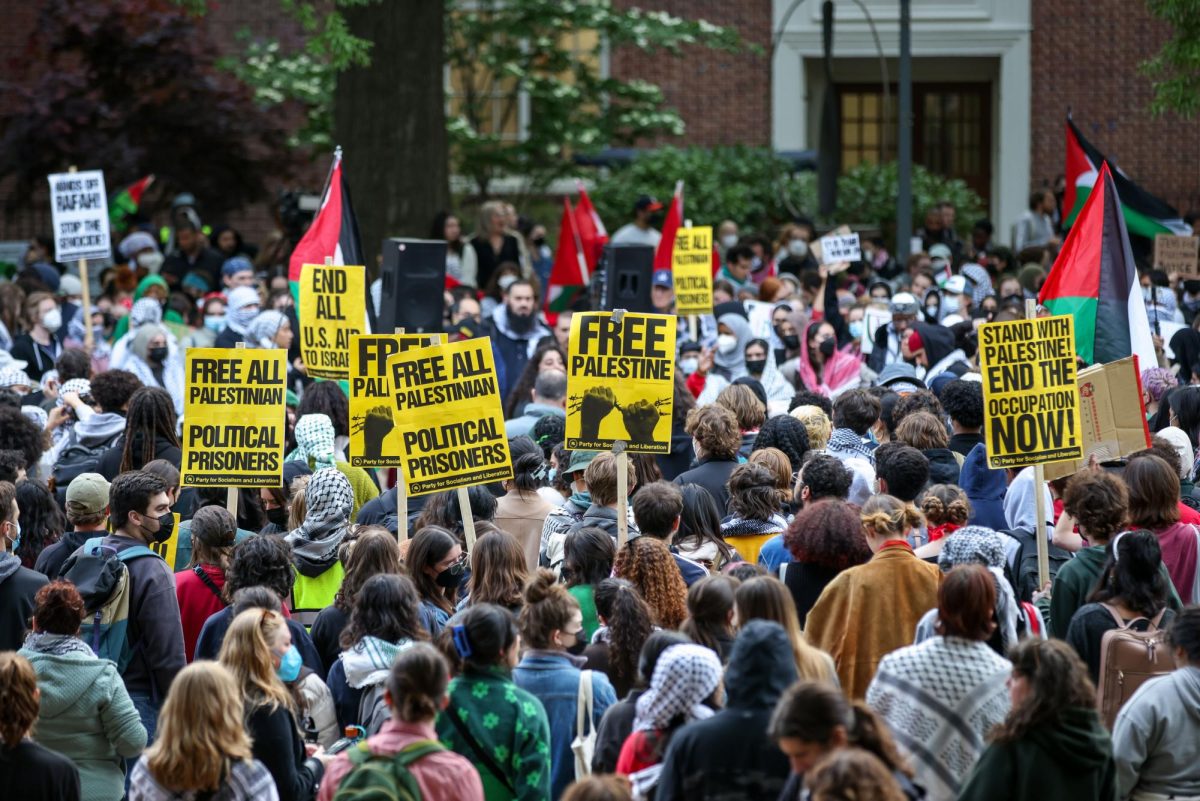GW is making history.
The images from University Yard and H Street in recent days echo past student demonstrations and round out an academic year in which officials have consistently struggled to find their footing on free speech.
Hundreds of students, staff, faculty and members of other D.C.-area universities have flocked to U-Yard since dawn Thursday. A rotating cast of officials have made occasional appearances inside and outside of the barricades, walls officials erected Friday morning that lock students inside U-Yard and stop others from getting in.
At around 11:30 p.m. Sunday, those barricades came down.
Time and time again in the wake of Oct. 7, officials have consistently failed to address the challenges protests pose. Nor have they acknowledged protesters’ demands, let alone, it seems, met them at the bargaining table.
And now, GW has proven protesters’ worst fears right. Officials have stifled student, staff and faculty speech and jeopardized their safety. We need leadership who won’t.
At about 9 p.m. Sunday, University President Ellen Granberg and Provost Chris Bracey released their second of two statements regarding the protest. “GW remains dedicated to protecting our community’s rights to activism, engagement, and the free expression of diverse viewpoints,” they wrote. “Free expression and activism, however, are not unlimited.”
Freedom of expression and freedom from disruption exist in tension, and establishing a balance between these two principles isn’t easy. But officials’ all-or-nothing approach has contributed to tearing the University community apart.
Whether protests, projections, vigils or now encampments, GW’s response to pro-Palestinian, anti-war activism has ranged from rapid condemnation to radio silence. And it’s alarming how the same administrators who quickly voiced their concerns about antisemitism last semester have yet to specifically address a spate of antisemitic signs on campus.
Given their record, it appears officials believe they can either discipline demonstrators or do nothing at all. Neither route, as Granberg said, “strengthens” the University during these “challenging times.” Rather, they signify how officials have become unable to lead the campus.
Bracey came face to face with a group of protesters as he walked through U-Yard Monday around 1 a.m. “This is your biggest nightmare,” a protester said. “You think I’m afraid of this?” Bracey replied, before walking into Lisner Hall.
This remark isn’t just offhanded. It sums up officials’ utter detachment from students, staff and faculty. When the University community and officials are living in different universes, how are we supposed to come together?
This past year has taught us that cracking down on one protest only leads to another. When institutions respond with heavy-handed tactics and police violence, they mobilize others to act. Look no further than Sunday night. After GWPD officers confronted two protesters and grabbed at least one by the arm, demonstrators pushed down barricades, rushed into U-Yard and moved tents.
As it stands, citing GW’s mission and values doesn’t satisfy the demands of protesters, restore the routine of students, staff and faculty whose lives and work have been interrupted, or assuage the concerns of parents, alumni or donors.
Creating an environment where free speech and safety coexist isn’t impossible. But for our leaders, it seems it is.
The editorial board consists of Hatchet staff members and operates separately from the newsroom. This week’s staff editorial was written by Opinions Editor Ethan Benn and incoming Opinions Editor Andrea Mendoza-Melchor based on discussions with Contributing Culture Editor Jenna Baer, Contributing Social Media Director Anaya Bhatt, Assistant Copy Editor Carly Cavanaugh and Culture Editor Nick Perkins.



